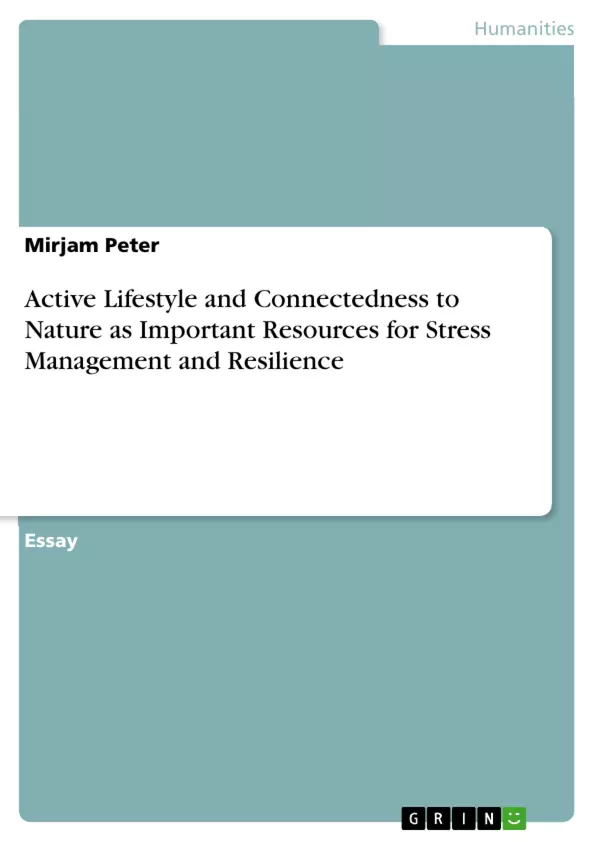An active lifestyle and oases of recreation in everyday life can contribute to wellbeing and quality of life. Nature and natural surroundings facilitate a balanced lifestyle by offering opportunities for physical activity and relaxation. There is empirical evidence about the stress reducing effects of moderate physical activity and meditation in natural surroundings. Resilience promotion (e.g. acceptance, self-efficacy, optimism etc.) also contributes to increased equanimity regarding exceeding demands and feelings of overload in general.
The topics mentioned are briefly summarised in this essay based on current literature about findings from literature and self-help books. The essay also contains useful examples for redesigning everyday routines.
Table of Contents
- Nature and natural environments as recreational areas
- The lifestyle factors connectedness to nature and physical activity
- The stress factors of exceeding demands and sensory overload
- Stress management
- Self-management and the cultivation of equanimity
- Mental training and physical activity
- Resilience promotion
- The resilience factors self-efficacy and control / orientation
- The resilience factor optimism
Objectives and Key Themes
This text aims to explore the relationship between nature, lifestyle factors, stress, and resilience. It delves into the benefits of natural environments for mental well-being and the impact of modern stressors on our health. The text also examines various stress management strategies and how they contribute to building resilience.
- The restorative power of nature and its role in reducing stress
- The impact of lifestyle factors, including physical activity and equanimity, on mental and physical health
- The challenges of exceeding demands and sensory overload in a modern world
- Effective stress management techniques, including self-management and mental training
- The importance of resilience and the factors contributing to it, such as self-efficacy and control
Chapter Summaries
Chapter 1: Nature and natural environments as recreational areas
This chapter explores the restorative power of nature, highlighting its ability to provide a low-stimulus environment that helps the brain recover from stress. It emphasizes the importance of natural surroundings as recreational areas and sources of strength, contrasting it with the negative effects of sensory overload.
Chapter 2: The lifestyle factors connectedness to nature and physical activity
This chapter examines the positive effects of lifestyle factors such as physical activity and equanimity on mental and physical health. It discusses the impact of these factors on epigenetics, highlighting the benefits of activities like yoga and meditation.
Chapter 3: The stress factors of exceeding demands and sensory overload
This chapter focuses on the negative consequences of chronic stress, including health impairments and the potential for overload leading to symptoms similar to ADHD. It explores the impact of information overload and the constant media stream on our consciousness and vulnerability to stress.
Chapter 4: Stress management
This chapter delves into various stress management techniques, emphasizing the importance of self-management and the cultivation of equanimity. It discusses the role of mental training and physical activity in reducing stress levels and promoting overall well-being.
Keywords
The text focuses on key concepts such as nature, stress, resilience, lifestyle factors, self-management, equanimity, physical activity, sensory overload, and mental training. It explores the interplay between these concepts and their impact on human health and well-being.
- Quote paper
- Mirjam Peter (Author), 2017, Active Lifestyle and Connectedness to Nature as Important Resources for Stress Management and Resilience, Munich, GRIN Verlag, https://www.grin.com/document/369605



